
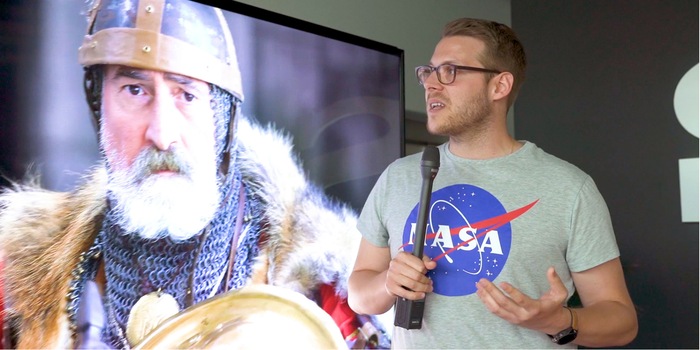
Sony Bravia ZG9: testing Sony’s first 8K TV
The first 8K television by Sony is named ZG9 and will be available on digitec this July. We’ve had the chance to visit Sony’s Swiss headquarters in Schlieren and get a first impression of this impressive television.
You don't get to see 8K content every day. This will hardly change in the near future, as very few cameras can even capture such high-resolution material. Why? This much image information generates too much data and the data bandwidth is too low to transfer 8K content from studio servers to home TVs.
Nevertheless, the 8K trend is taking the TV industry by storm. And Sony is joining in. The Japanese manufacturer's first 8K television, the ZG9, will be launched and available in our shop in July.

Having had the privilege to see and test it, here’s my first impression of this massive TV.
Size matters after all
The 47-kilo, 85-inch television is found in Schlieren, at the headquarters of Sony Switzerland. That’s where video producer Stephi and I are told the 8K TV isn’t suitable for small flats.
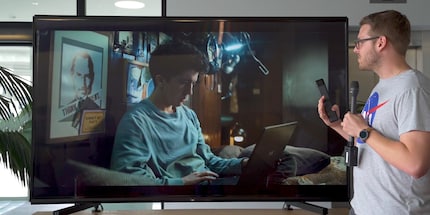
As Sony state, an 8K TV with over 33 million pixels – four times more than Ultra HD (UHD) resolution – only makes sense if it's either huge or you're sitting right in front of it. This has to do with how far from the screen your sitting – the distance at which you can’t tell pixels apart gives you the best possible high-definition experience. This distance may vary depending on the TV’s screen diagonal and resolution.
In other words: In Sony’s case, there’s no 8K TV below 85 inches or 2.16 metres screen diagonal. But there sure is a larger version, a 98-inch 8K TV. Any smaller screen would look almost as good in UHD resolution. I couldn’t agree more with Sony. My own experience also shows that it’s not worthwhile having high resolution with a 65-inch screen diagonal.
What is striking though is the heat that comes off the screen. Well, no wonder, the 33 million pixels are illuminated by hundreds of LEDs located directly behind the pixels. This technology is called Full Array Local Dimming (FALD) and I've written about it before. And yes, the ZG9 is never going to win a prize for being environmentally friendly: according to its specifications, this TV consumes about 636 watts in regular operation, which is hardly surprising considering its sheer size and the number of pixels and LEDs that need to be powered.
Full Array Local Dimming for convincing black
I couldn't get Sony to tell me exactly how many LEDs the ZG9 is equipped with. Just as all other manufacturers who use FALD backlighting, Sony is keeping it a secret. What they do proudly announce is that the ZG9 can turn each of these hundreds of LEDs on and off individually.
As Sony state, this is unique, as TVs by other manufacturers only allow to control LEDs in groups. What this means? The ZG9 is supposed to feature many more dimmable zones than its competitors and is therefore capable of displaying lower black levels and better contrast ratios than other TVs with FALD backlighting.
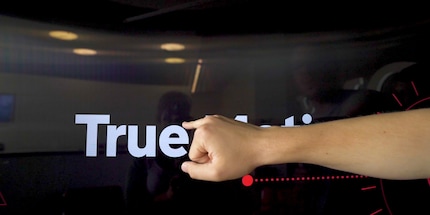
Then again, this statement can't be verified as long as TV manufacturers keep the details of dimmable zones such a secret. Except with special devices that measure brightness and black levels. Fortunately, the TV is in front of me. My first impression: the picture is excellent. Sure, an OLED TV with its True Black is even better, but the deep black I can see when I look at the black zones above and below the widescreen image section is pretty darn impressive.
At first glance, the backlight, which is shining bright behind the image section shown, does not seem to have any influence on the black. As far as I recall, the Q900R, Samsung's 8K TV counterpart, didn't perform as well in this respect.
And that's the difficulty with LCD TVs with four times more pixels than UHD TVs: keeping the black levels consistent across the entire screen. The FALD technology behind it impresses me again and again.
Upscaled content and good sound
Sony is well aware that it will take a while before 8K content is at least as popular and easily available as the current UHD content on Blu-Rays or streaming portals. That's why the X1 Ultimate processor was deliberately designed for 8K televisions, I'm told. The processor is supposed to ensure that UHD or even Full-HD content looks as if it had been shot in 8K resolution right from the start.
To demonstrate this, we get to see the trailer of «Spider-Man», which was originally available in UHD resolution and is now upscaled to 8K by the X1 Ultimate.
The processor really upscales the trailer smoothly, suppressing unwanted image noise, smoothing the edges and enhancing the colours. Motion blur? Nope. This has always been a strength of Sony processors, especially the X1 Extreme, the predecessor, which was virtually unrivalled a little over a year ago.
Of course, native 8K content, which is already available in a few places – for example on YouTube – always looks better than upscaled content. Nevertheless, thanks to the image optimising processes of the Sony chip, watching TV with UHD-HDR material is a great pleasure.

The sound is also great. Sony calls the system that's implemented in the ZG9 «Acoustic Multi Audio». It consists of four loudspeaker sets – two on the upper and two on the lower display frame – which are made up by two mid-range drivers and a tweeter of about 40 watts each. Sony is trying to imitate the immersive sound of «Acoustic Surface Audio» – the sound system used in its OLED TVs. In fact, when playing a Netflix video, I do find that in dialogues where one speaker is in the top right corner of the screen, the sound seems to come from this same corner.
Sony has installed four bass speakers behind the screen itself. That's why the Spider-Man trailer had quite some oomph. Yes, the ZG9's Acoustic Multi-Audio sound is impressive. But I still wonder who'd spend so much money on a television without having a home cinema system to round off the luxury. The same applies to other manufacturers who attach great importance to good sound reproduction.
Sony's advantage: the ZG9 is equipped with a dedicated amplifier connector that turns the TV itself into a centre speaker.
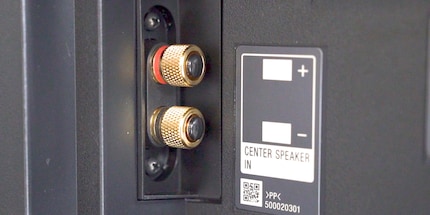
That's clever.
My first impression
There's only one thing I don't like about this TV: the design of its stand. I asked the Sony representative if the stand was constructed this way because this monster of a TV is so huge and heavy. He denied and said Sony wanted to capture the industrial look. I see. Personally, I much prefer the simple and elegant design of the OLED AF9, which I've also tested.
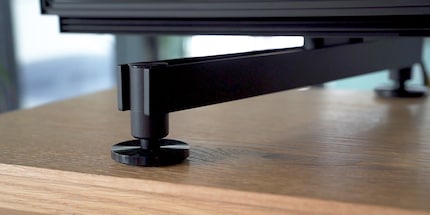
Apart from that, my first impression is: convincing picture quality with bright but natural colours, great black levels for an LCD TV and good sharpness even with upscaled material. From 85-inch screen diagonal, it may even make sense to consider 8K resolution, although I'm still convinced UHD would be sufficient. The operating system – Android Oreo 8.0 – is user-friendly and seems to run smoothly. The sound is room filling and the bass amazingly powerful.
Yep, I like what I see.
I write about technology as if it were cinema, and about films as if they were real life. Between bits and blockbusters, I’m after stories that move people, not just generate clicks. And yes – sometimes I listen to film scores louder than I probably should.
From the latest iPhone to the return of 80s fashion. The editorial team will help you make sense of it all.
Show all

